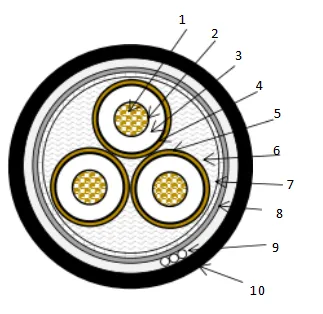ធ្នូ . 11, 2024 23:20 Back to list
actuated ball valve
Understanding Actuated Ball Valves An In-Depth Overview
Actuated ball valves are essential components in many industrial applications, providing precise control over fluid flow in a variety of systems. Typically used in the oil and gas, water treatment, chemical processing, and HVAC industries, these valves ensure that processes operate smoothly and efficiently.
What is an Actuated Ball Valve?
A ball valve is a type of quarter-turn valve that uses a spherical disc, known as a ball, to control the flow of fluids. The ball has a hole in the center that allows fluid to pass through when aligned with the pipeline, while rotation of the ball closes the valve. An actuated ball valve incorporates an actuator, which can be pneumatic, electric, or hydraulic. This actuator enables the valve to be opened or closed automatically or remotely, enhancing its functionality and efficiency.
Components of Actuated Ball Valves
1. The Valve Body The body of the valve is typically made of durable materials such as stainless steel or brass. The choice of material depends on the application and the type of fluid being controlled.
2. The Ball The ball is the critical component that regulates flow. It is precision-engineered to ensure a tight seal when closed, preventing leaks.
3. The Actuator This is the driving force behind the valve operation. Electric actuators use electric motors to rotate the ball, while pneumatic actuators use compressed air. Hydraulic actuators function similarly but utilize pressurized fluid to generate motion.
4. Position Indicator Many actuated ball valves are equipped with position indicators, allowing operators to visually check whether the valve is open or closed.
5. Control System The actuator is usually connected to a control system, which can be automated or manually operated based on the requirements of the application.
Advantages of Actuated Ball Valves
- Precision Control Actuated ball valves offer precise control over the flow rate, which is crucial in many applications where the characteristics of the fluid need to be closely monitored
.actuated ball valve

- Reduced Labor Costs By automating the opening and closing of valves, companies can reduce the need for manual operation, leading to significant labor savings.
- Enhanced Safety Automated valves can be operated from a distance, reducing the risk of accidents in hazardous environments. This is particularly important in industries dealing with toxic or flammable substances.
- Reliability These valves are designed for long life and can withstand extreme temperatures and pressures. Their robust construction ensures they perform reliably over time.
- Versatility Actuated ball valves can handle a wide range of fluids, including gases, liquids, and slurries, making them suitable for diverse applications.
Applications of Actuated Ball Valves
Actuated ball valves are widely used in several industries, including
- Oil and Gas In drilling and production applications, actuated ball valves help control the flow of crude oil and natural gas, ensuring efficient operation and safety.
- Water Treatment These valves are integral in the treatment processes, managing the flow of water and chemicals effectively.
- Chemical Processing In chemical plants, actuated ball valves facilitate the handling of corrosive and hazardous materials, providing both safety and control.
- HVAC Actuated ball valves play a critical role in regulating the flow of heat transfer fluids in heating, ventilation, and air conditioning systems.
Conclusion
Actuated ball valves represent a significant advancement in the management of fluid dynamics within various industrial processes. Their efficiency, precision, and automation capabilities make them invaluable tools across multiple sectors. As technology continues to evolve, the designs and functionalities of actuated ball valves are likely to improve, further enhancing their role in industrial applications. Choosing the right actuated ball valve for a specific application can lead to increased efficiency, reduced operational costs, and improved safety measures, making it a crucial decision for engineers and facility managers alike. Understanding these valves is essential for optimizing fluid control systems and ensuring seamless operation in complex environments.
Share
-
Reliable Wafer Type Butterfly Valves for Every IndustryNewsJul.25,2025
-
Reliable Flow Control Begins with the Right Ball Check ValveNewsJul.25,2025
-
Precision Flow Control Starts with Quality ValvesNewsJul.25,2025
-
Industrial Flow Control ReliabilityNewsJul.25,2025
-
Engineered for Efficiency Gate Valves That Power Industrial PerformanceNewsJul.25,2025
-
Empowering Infrastructure Through Quality ManufacturingNewsJul.25,2025


